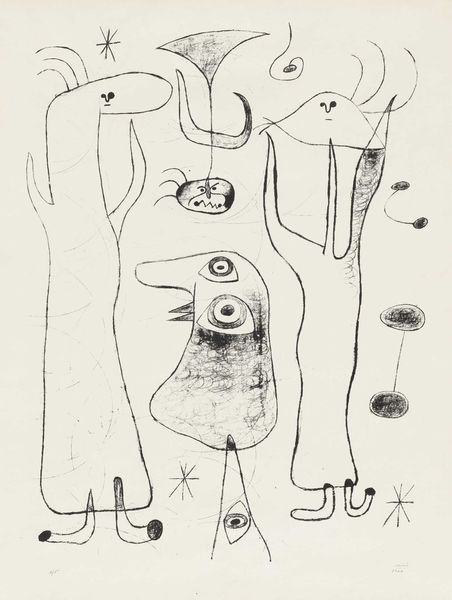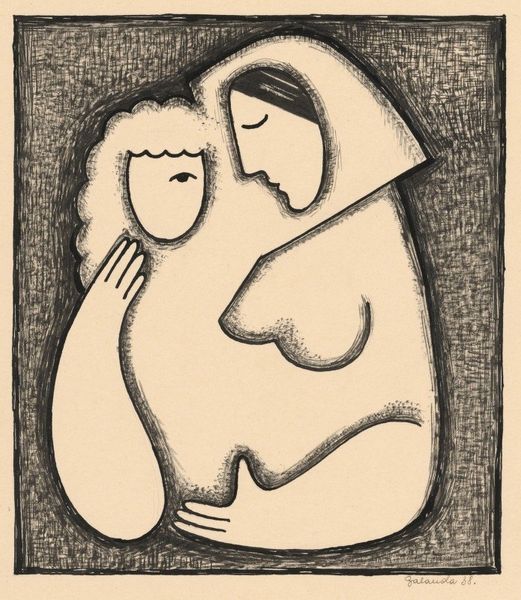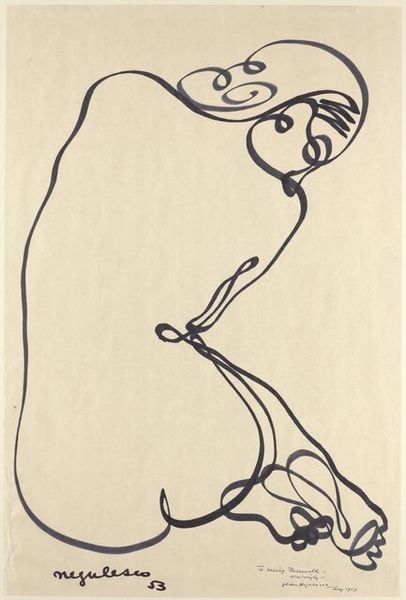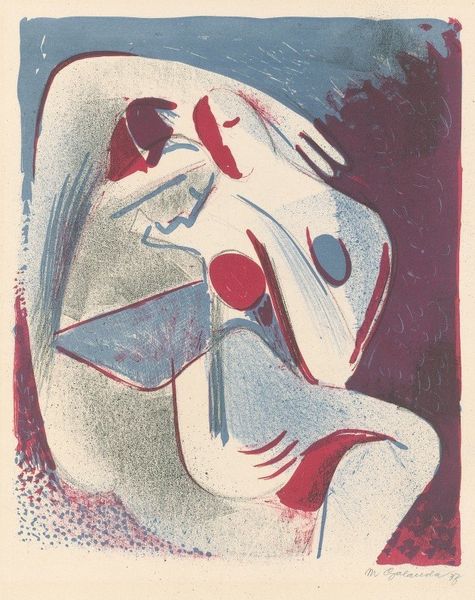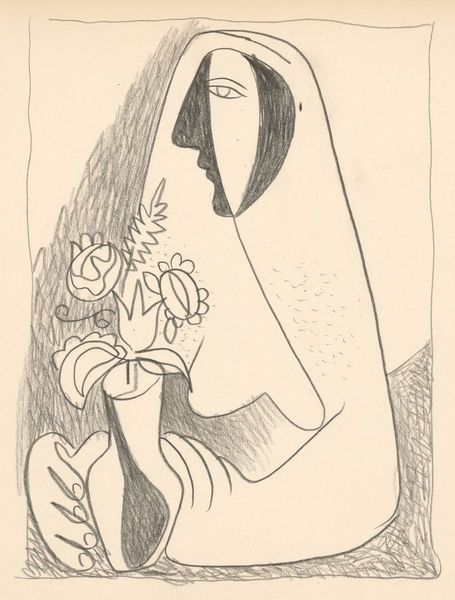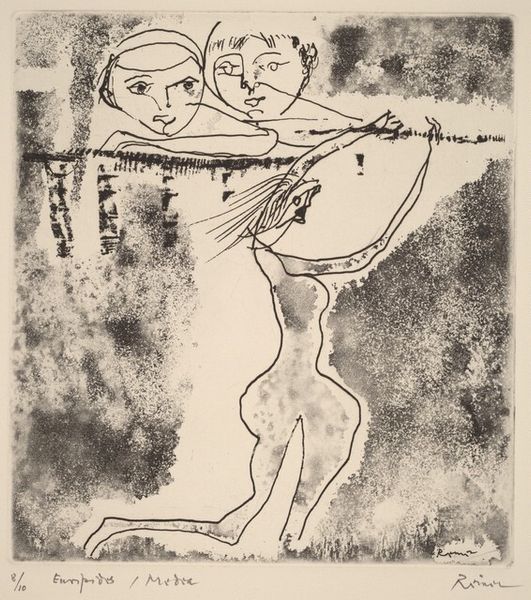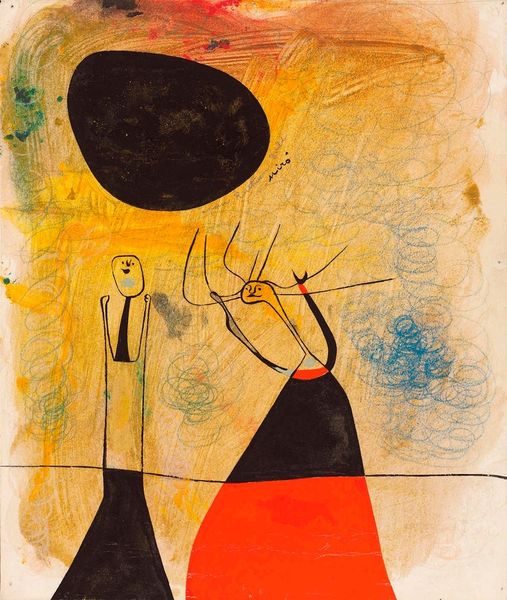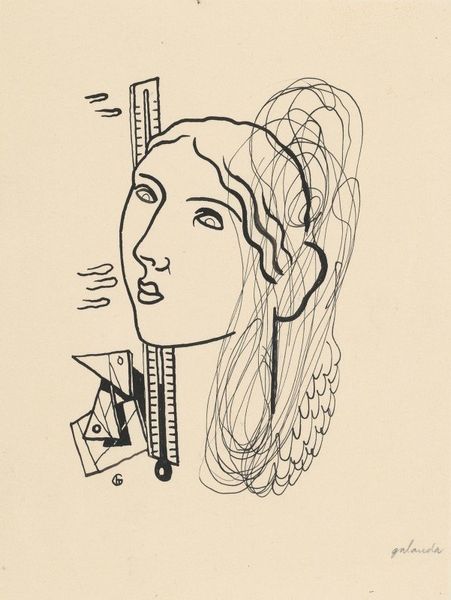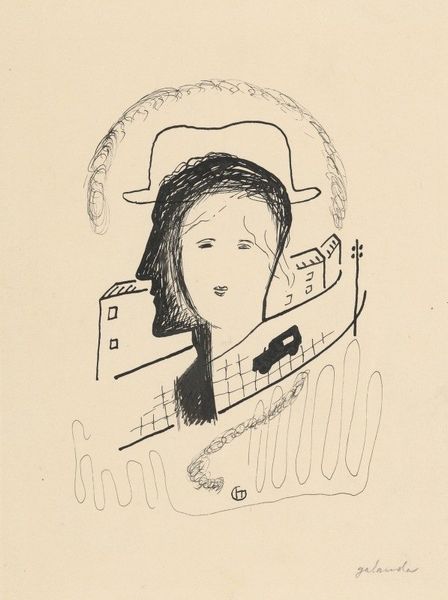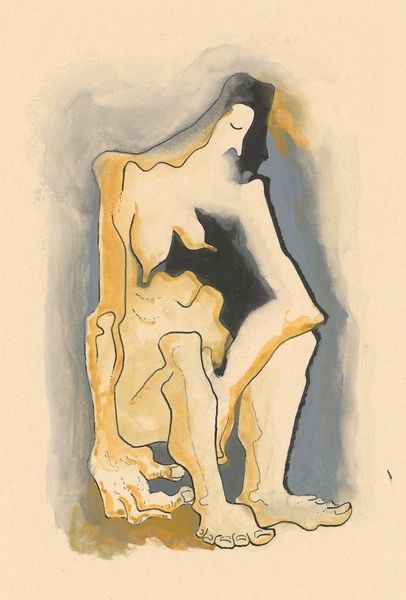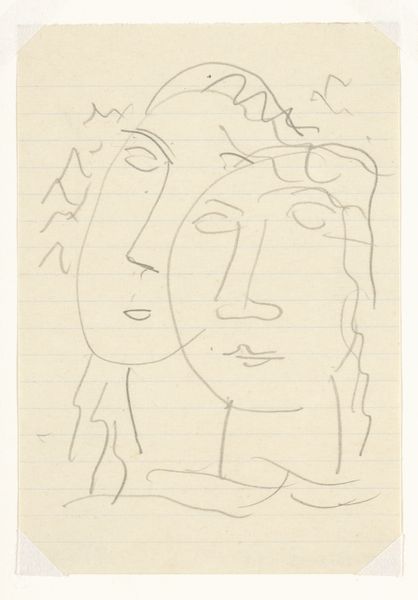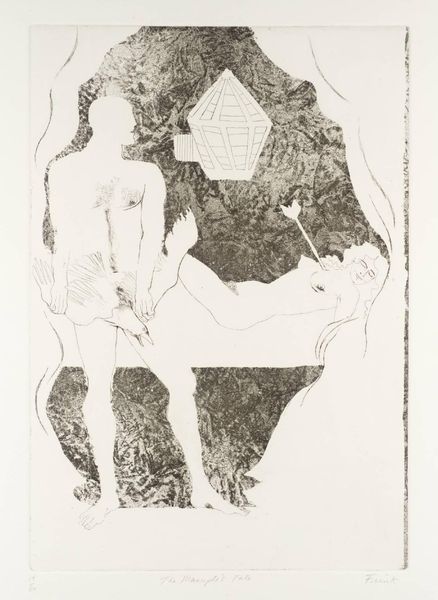
drawing, ink, pen
#
portrait
#
drawing
#
blue ink drawing
#
pen illustration
#
figuration
#
ink
#
pen-ink sketch
#
expressionism
#
line
#
pen
#
modernism
Copyright: Public Domain: Artvee
Editor: This is "Ball," a 1930 ink drawing by Mikuláš Galanda. The composition feels both simple and unsettling. The stark lines and stylized figures are quite striking. How do you interpret this work, considering its historical context? Curator: This piece speaks volumes about the artistic currents of its time. Galanda was working in Czechoslovakia during a period of intense social and political change. The rise of modernism, with its rejection of traditional forms, often reflected a questioning of established authority. Do you see that reflected in the work itself? Editor: I think so. The distorted, almost mask-like faces feel like a rejection of classical portraiture. There's also something about the isolated balloon – is it symbolic of childhood innocence lost, or perhaps a fragile hope? Curator: Precisely. The balloon could indeed symbolize fragility in the face of societal pressures. Consider the influence of Expressionism at the time; artists were using distorted forms and bold lines to express inner turmoil and critique societal norms. How do you think this piece functions as a form of social commentary? Editor: Perhaps it's commenting on the dehumanizing effects of industrialization and the alienation of the individual in a rapidly changing world? The figures do seem detached and impersonal. Curator: Exactly! Galanda's work wasn't just about aesthetics; it engaged with the anxieties and uncertainties of its era, challenging viewers to confront the realities of modern life. Editor: I hadn't considered the socio-political undertones so explicitly, but now it seems impossible to ignore. It's much more than just an image of faces and a balloon. Curator: The power of art lies in its ability to both reflect and shape our understanding of the world. And Galanda was very active within the public debate about modernism in Slovakia. It’s interesting how such a seemingly simple drawing can hold so much complexity, isn't it? Editor: Definitely! I'm walking away with a much deeper appreciation for Galanda’s "Ball" and its place in history. Thanks for sharing your insights.
Comments
No comments
Be the first to comment and join the conversation on the ultimate creative platform.

